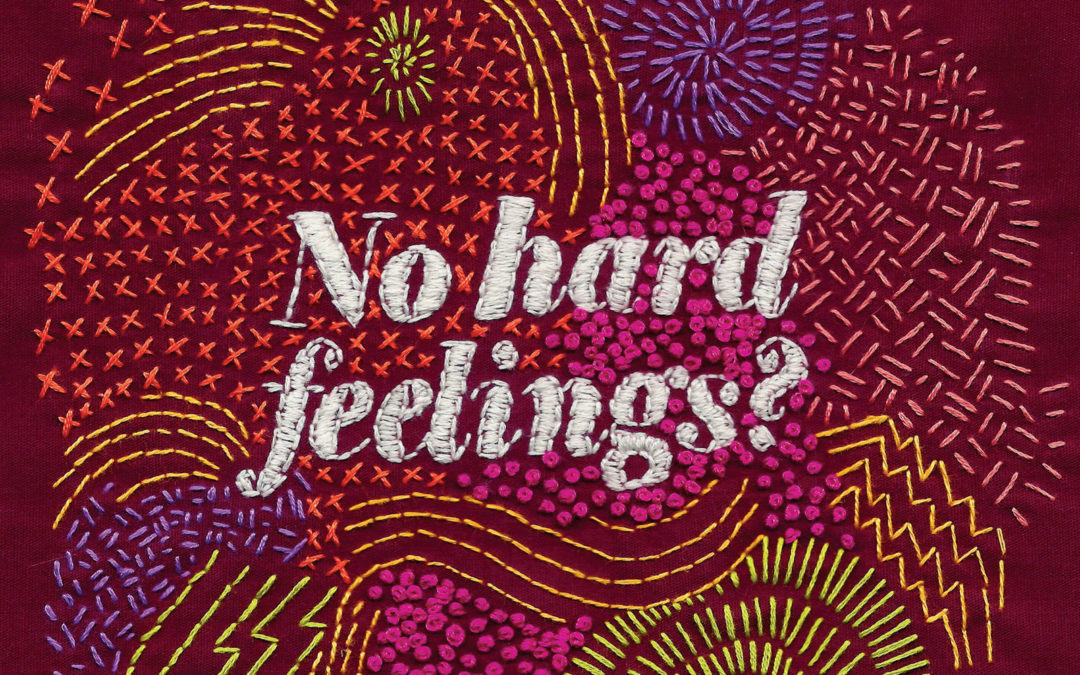by Sarah Carson—
My friend, Katie, revels in the change of seasons—especially summer into fall.
Years ago when we worked together in Chicago, we often walked outside for lunch, and she’d delight in the changing leaves.
“Katie,” I’d complain, “Fall means summer is over. Fall means cold is coming.”
She’d remind me that all of life is about seasons and change; the trees were only doing what we all do—shedding their former selves, readying themselves to be reborn in the spring.
These days I’m thinking a lot more about rebirth and renewal. As the mother of a 2-year-old, change is constant. Just when I think our life has become routine, a favorite food is suddenly thrown across the kitchen, or bath time, once an easy way to splash away a morning, becomes apocalyptic.
Our biggest challenges of late are tantrums—those moments when my daughter’s frustrations and underdeveloped language skills meet.
When I can’t figure out which book she wants to read or which doll she is asking for, she’ll dig her feet into our hardwood floor, tighten every muscle in her body, tilt her head back and scream.
“Just show me,” I’ll plead. “I don’t understand.”
“I AM showing you,” her screaming suggests. With no words to express herself, the anger begins to spiral.
Language is perhaps one of the many things we adults take for granted. When we want something, or when we are frustrated or irritated, we can say so. Often, as adults, we’ve convinced ourselves that we shouldn’t express our anger, grief or lament, but what is the gift of language if not a means to share the totality of what we feel?
As we begin our fall Bible study, “No hard feelings?” about the poetry of the Old Testament, we will see how the writers of Scripture used language to share a range of emotions—including anger—with God and each other.
Bible study author Anna Madsen writes (p. 20), “Within these old, old texts we will discover that anger was hardly taboo to the Hebrew people, that they recognized both anger’s righteousness and its risk, and that they realized that by venting anger in prayer and communal liturgy, they staved off toxic and dangerous manifestations of it in their personal lives.”
Many of us—especially women—have internalized a belief that anger is wrong. When we are angry, we decide that we are the problem, that we should get over it and move on.
Julie Kanarr reminds us, though, that anger is a first step in a much bigger process (p. 10): “We can be honest and courageous in expressing the whole range of our emotions to God, then channel our emotional energy into actions of love and compassion toward others.”
Cara Strickland echoes this sentiment: “In the past, I thought I could steer clear of trouble by removing anger from my life. Now I see anger as a tool God uses to continue to make all things new (p. 6).”
My 2-year-old is already learning how to use her anger for change—even if right now that change is only to get me to put Elmo on the television.
When I look at my daughter, I can see plainly what the authors in this issue insist upon: that our emotions are natural, a gift from God. We are not meant to hide them, but to harness them. And it is only in sharing them that we begin to move forward, to make the world a better place.
Sarah Carson is the associate editor of Gather.
This article appeared in the September 2019 issue of Gather magazine. To read more like it, subscribe to Gather.



One of the greatest gifts a friend gave me at a time of deep fear & loss was to ask me if I had gotten angry with God. I responded no. ( I thought it was wrong) she looked right in my eyes and said “it’s time”. Soon after I poured out my frustrations, fears,& anger to God in a long & fearful lament. Then I could move on out of the grief & pain and into hope.
Suppressing anger is toxic. It can lead to clinical depression.
How well I know! Why is it possible for boys, young children and men to show anger so easily but not for women?
Why is it that We, as young women learned to internalize our anger telling our inner self that it is not proper (ladylike, kind, nice) to exhibit anger.
As we age and learn behaviors that allow us to be true to ourselves without hurting those closest to us, God’s truths allow us to move beyond guilt.